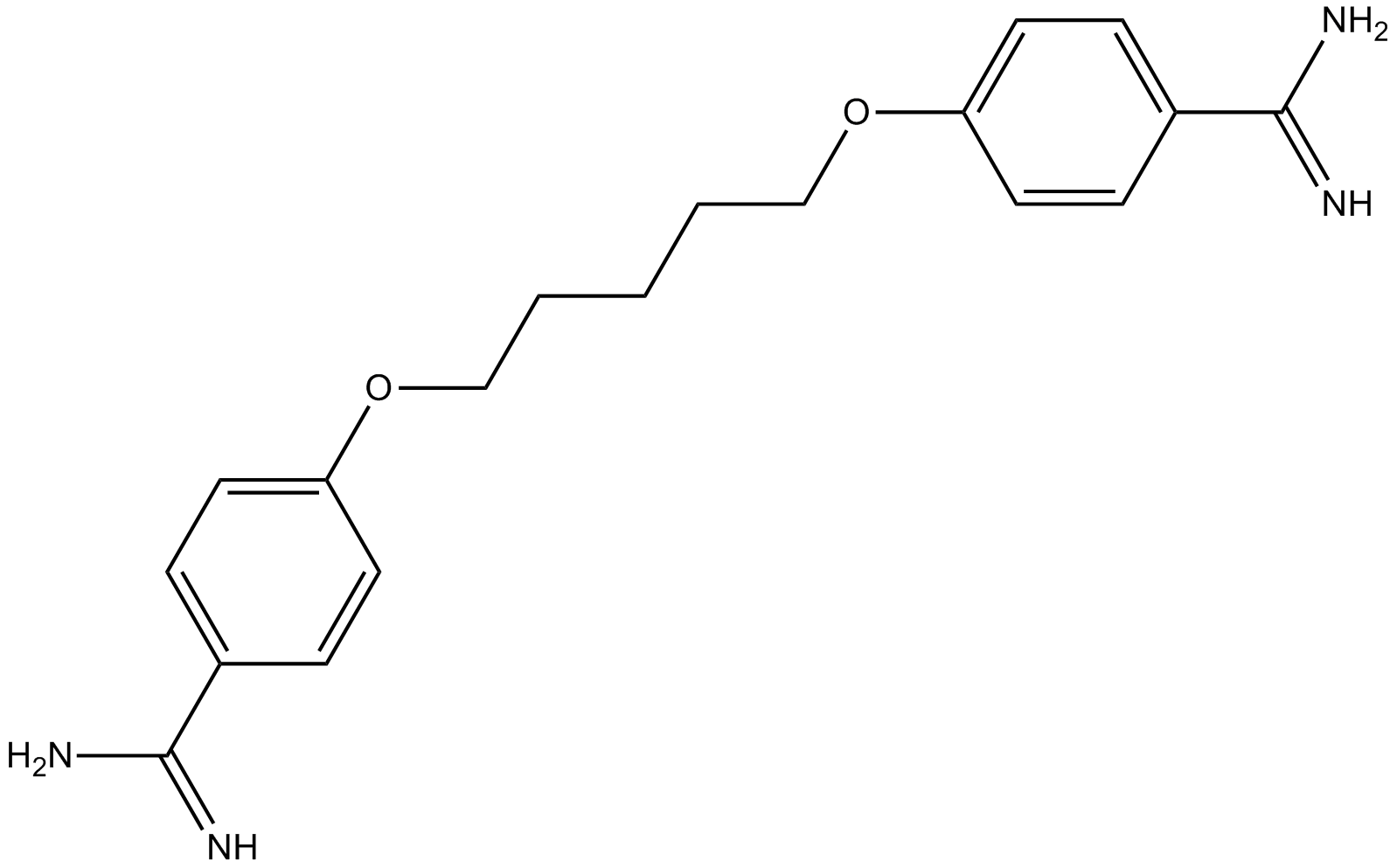Pentamidine (Synonyms: NSC 9921) |
| Catalog No.GC11468 |
Drug to treat protozoal diseases
Products are for research use only. Not for human use. We do not sell to patients.

Cas No.: 100-33-4
Sample solution is provided at 25 µL, 10mM.
Pentamidine(MP-601205) is an antimicrobial agent.Target: AntiparasiticPentamidine has a potent in vitro antiprotozoal activity. Pentamidine displays cytotoxic activity against L. infantum promastigotes with IC50 of 2.5 μM. 2.5 μM Pentamidine induces early programmed cell death in 49.6% of L. infantum promastigotes. 2.5 μM Pentamidine induces a notorious decrease in promastigotes in both G1 and S phases relative to the control-untreated samples (G1:77.0 vs 15.0%; S:11.0 vs 2.4% for control- and pentamidine-treated promastigotes, resp). Pentamidine is able to bind with calf-thymus DNA (CT-DNA) and induces conformational changes in the DNA double helix. Pentamidine also binds with ubiquitin to modifiy the β-cluster of ubiquitin [1]. Pentamidine is an inhibitor of phosphatase of regenerating liver (PRLs). 1 μg/mL of Pentamidine complete inhibits the activity of recombinant PTP1B in dephosphorylating a phos-photyrosine peptide. 10 μg/mL of Pentamidine completely inhibits the activities of recombinant PRL-1, PRL-2 and PRL-3 in dephosphorylating a phosphotyrosine peptide substrate. Incubation with Pentamidine (1 μg/mL) for 48 h reduces the activity of intracellular PRL phosphatases in transfected NIH3T3 cells by more than 85%. 10 μg/mL Pentamidine completely inhibits the growth of melanoma cell line (WM9), prostate carcinoma cell line (DU145 and C4-2), ovarian carcinoma cell line (Hey), colon carcinoma cell line (WM480), and lung carcinoma cell line (A549) which all express endogenous PRLs [2].
References:
[1]. Nguewa, P.A., et al., Pentamidine is an antiparasitic and apoptotic drug that selectively modifies ubiquitin. Chem Biodivers, 2005. 2(10): p. 1387-400.
[2]. Pathak, M.K., et al., Pentamidine is an inhibitor of PRL phosphatases with anticancer activity. Mol Cancer Ther, 2002. 1(14): p. 1255-64.
Average Rating: 5 (Based on Reviews and 40 reference(s) in Google Scholar.)
GLPBIO products are for RESEARCH USE ONLY. Please make sure your review or question is research based.
Required fields are marked with *




















